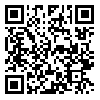Volume 22, Issue 6 (3-2023)
ijdld 2023, 22(6): 399-408 |
Back to browse issues page
Download citation:
BibTeX | RIS | EndNote | Medlars | ProCite | Reference Manager | RefWorks
Send citation to:



BibTeX | RIS | EndNote | Medlars | ProCite | Reference Manager | RefWorks
Send citation to:
Emamjomeh M, Hassanpourezatti M, Hosseinali A. The Effect of Oral Administration of Recombinant Human Interleukin-2 on Molecular Markers of Diabetic Neuropathy in the Brain of Drosophila Melanogaster. ijdld 2023; 22 (6) :399-408
URL: http://ijdld.tums.ac.ir/article-1-6181-en.html
URL: http://ijdld.tums.ac.ir/article-1-6181-en.html
1- Department of Biology, Faculty of Basic Sciences, Shahid University, Tehran, Iran
2- Department of Biology, Faculty of Basic Sciences, Shahid University, Tehran, Iran ,hassanpour@shahed.ac.ir
2- Department of Biology, Faculty of Basic Sciences, Shahid University, Tehran, Iran ,
Abstract: (933 Views)
Background: In this study, the effect of oral administration of recombinant human interleukin-2 (rhIL-2) on brain NO level and AChE activity in hyperglycemic conditions induced by high-sucrose diet (HSD), as a type-2 diabetes model, was investigated in Drosophila melanogaster.
Methods: In this experimental research, adult fruit flies of both sexes (30 in each group) were divided into the six groups: receiving normal diet (ND); high-sucrose diet (HSD); ND with rhIL-2 at 0.01 and 0.1 ng/ml; and HSD with rhIL-2 at 0.01 and 0.1 ng/ml. Flies were bred on these culture media for three weeks. At the end of the experiments, the brains of the flies were extracted, homogenized, and glucose, NO, and AChE activity levels were measured by the kit.
Results: Glucose level, AChE activity and NO level increased in brain homogenate of HFD flies compared to ND group. The body weight of HSD flies was reduced compared to the ND. Administration of rhIL-2 along with HFD significantly prevented these changes.
Conclusion: These findings suggest that rhIL-2 partially prevents diabetic neuropathy in Drosophila. It seems that the preventive effects of this compound are mediated through mechanisms dependent on nitric oxide and acetylcholinesterase in the brain.
Methods: In this experimental research, adult fruit flies of both sexes (30 in each group) were divided into the six groups: receiving normal diet (ND); high-sucrose diet (HSD); ND with rhIL-2 at 0.01 and 0.1 ng/ml; and HSD with rhIL-2 at 0.01 and 0.1 ng/ml. Flies were bred on these culture media for three weeks. At the end of the experiments, the brains of the flies were extracted, homogenized, and glucose, NO, and AChE activity levels were measured by the kit.
Results: Glucose level, AChE activity and NO level increased in brain homogenate of HFD flies compared to ND group. The body weight of HSD flies was reduced compared to the ND. Administration of rhIL-2 along with HFD significantly prevented these changes.
Conclusion: These findings suggest that rhIL-2 partially prevents diabetic neuropathy in Drosophila. It seems that the preventive effects of this compound are mediated through mechanisms dependent on nitric oxide and acetylcholinesterase in the brain.
Keywords: Recombinant Human Interleukin-2, Diabetic Neuropathy, Drosophila Melanogaster, Nitric Oxide, Acetylcholinesterase
Type of Study: Research |
Subject:
Special
Received: 2022/09/28 | Accepted: 2023/02/22 | Published: 2023/03/1
Received: 2022/09/28 | Accepted: 2023/02/22 | Published: 2023/03/1
Send email to the article author
| Rights and permissions | |
 |
This work is licensed under a Creative Commons Attribution-NonCommercial 4.0 International License. |






